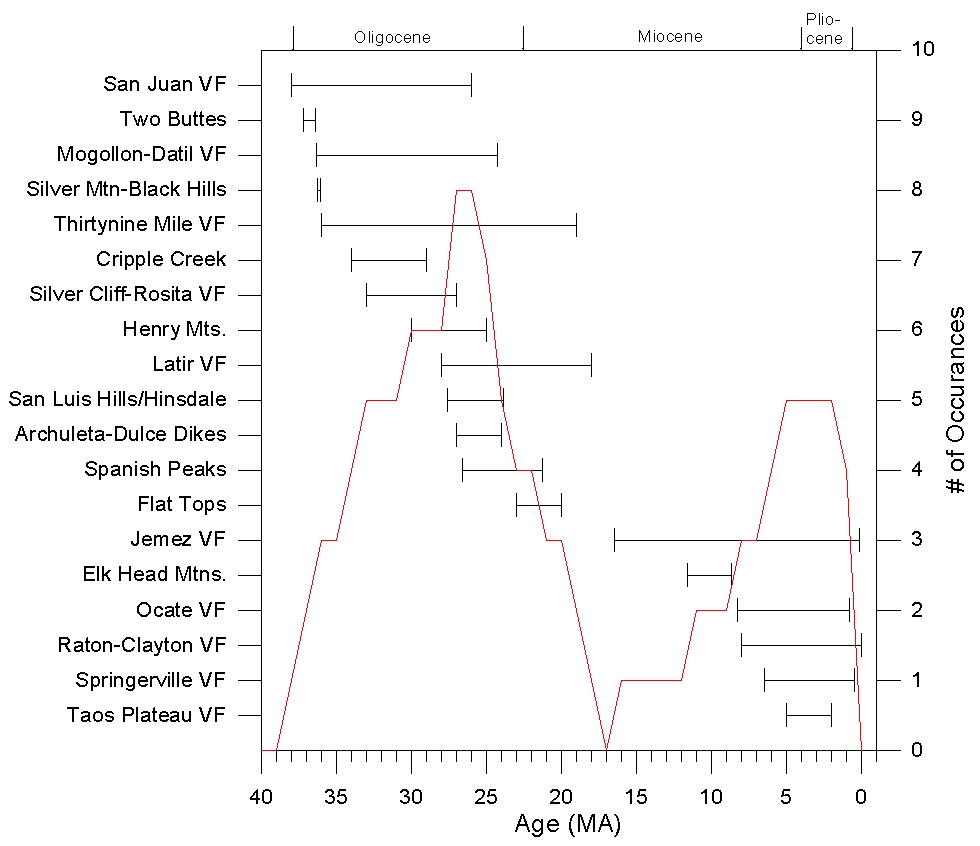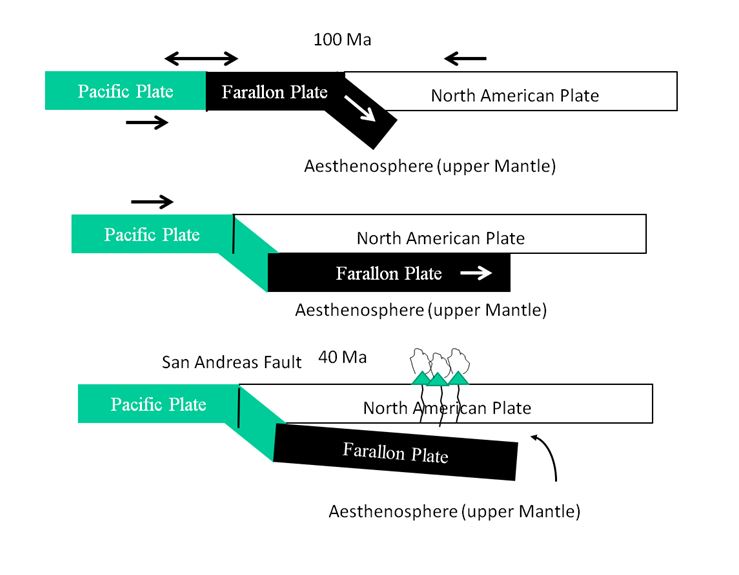Chronology of Spanish Peaks Intrusive Rocks
These are the all the dates for the Spanish Peaks rocks that I'm aware of including Dick Smith's and Jay Stormer's work.
Note: Click on samples names (left side) beginning with "SP" to see graphs of apparent age versus percent argon released.
(Click on any sample beginning with "SP" to see age spectra)
Samples are given on the left with the phase dated on the right axis. The point is the age with error bars on either side. The argon ages were done at the U.S.G.S Branch of Geochemistry, Lakewood CO. Samples beginning with "SP" and black dots are from this study. those beginning with "RS" and open squares are from Smith (1975), those beginning with "JS" and open diamonds are from Stormer (1972). Armstrong (1969) published one date of 39.5 Ma for East Spanish Peak, but this value was ignored because there was no error information provided and this age is inconsistent with the other ages by later authors.
This diagram shows the ages of intrusion for the major features of the Spanish Peaks region. Included here are all the age data for the Spanish Peaks available at this time. The 40Ar/39Ar dates had a maximum error of 0.250 Ma, so this was adopted for all the dates. The argon ages indicate a fairly continuous period of intrusive activity in the Spanish Peaks from about 26.6 Ma (SP37) to 21.4 Ma (SP131). The other dates are given for comparisons sake.
Armstrong, R. L. 1969. K-Ar Dating of Laccolithic Centers of the Colorado Plateau and Vicinity, Geological Society of America Bulletin 80:2081-2086.
Smith, R. P. 1975. Structure and Petrology of Spanish Peaks Dikes, South Central Colorado. Ph.D. Thesis, University of Colorado at Boulder, 191p.
Stormer, J. C. Jr. 1972. Ages and Nature of Volcanic Activity on the Southern High Plains, New Mexico and Colorado. Geological Society of America Bulletin 83:2443-2448.
Timing of Regional Volcanism and Magmatism

Dashed line is histogram of volcanic and magmatic occurrences in the Rio Grande Rift. One peaks occurred in Mid- to Late-Oligocene time (28-27 Ma), and the other more of a plateau was during Late-Miocene to Pliocene time (5-2 Ma).
I added the following slide to my talks several years ago, because it is apparent that subalkaline volcanism ramped-up during the late Eocene (about 40 Ma,)
peaking about 26 Ma (late-Oligocene) then
decreased down to zero at 17 Ma (mid-Miocene) followed by an
increase in basaltic volcanism. Basaltic volcanism in the region plateaued between 5-2 Ma (Miocene,) dropping off rather precipitously to the current level today.
The primary cause suggested in the literature (reference here) is that the initial volcanism was due to the flat-subducting Farallon plate and subsequent Rollback
of the plate and foundering. I prefer the term Delamination to Rollback.
